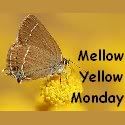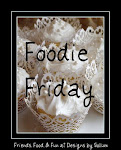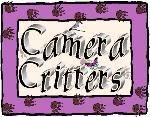
They flutter in front of my windows to announce their arrival.

They bring such joy!

Do you feed your hummingbirds?
Mix up some sugar water and they will come!
FEEDING HUMMINGBIRDS
Feeding hummingbirds is an easy, inexpensive and rewarding pastime. All you need is a feeder, table sugar, some water and you are all set. Here are some easy guidelines to get you started.
Feeders
The most important criteria when selecting a feeder are that it be easy to clean and easy to fill. In order to be a responsible host, you must keep your feeder very clean and full of fresh nectar. We all lead busy lives, so choosing a feeder which makes these tasks easy will help to ensure that you do them. Feeders should come apart so that all parts are open and available for cleaning. Please do not underestimate the importance of this. It will be explained more in the section on maintenance.
Hummingbirds will eat from anything with nectar in it, but they must be able to find it. Most hummingbird feeders have red on them because the birds seem to be more attracted to red than to other colors. If you look at the feeder in the photo at the top of this page, you will see that it is practically a beacon for hummingbirds saying "EAT HERE!" If your feeder does not have red on it, don't worry. Just tie a piece of bright red ribbon or nursery tape on it to attract them. They will explore around and find the nectar once they discover the feeder.
Some feeders have perches and some do not. Hummingbirds do not need perches on feeders, but they will use them if they exist and you will get to see a special treat: a hummingbird sitting still. It is also fun to watch them learning how to do it.
We have some excellent hummingbird feeders available at the Wild Bird Shop. If you stop by we will be happy to demonstrate them. Or you can select and order one from our Refuge online catalog.
Food
In nature, hummingbirds eat flower nectar for energy and bugs for protein. Flower nectar is 21% to 23% sucrose - regular table sugar - so it is very easy and inexpensive to make. Here is the recipe for making hummingbird nectar:
- Mix 4 parts water to 1 part table sugar in a pan. Do not use honey, Jell-O or brown sugar. Especially do not use artificial sweeteners. Putting hummingbirds on a diet will kill them. They burn prodigious amounts of energy for their size and need real sugar. Do not use red food coloring. It is unnecessary and can harm the little hummers even in low concentrations because they eat so much nectar. If your feeder isn't red, tie a red ribbon on it as described in the Feeders section, above. Just sugar and water, that's all.
- Bring to a boil then remove from the heat. Stir it while it is heating until all of the sugar is dissolved. Don't boil it for long because that will change the ratio as water is boiled off. The reason for boiling is not to make syrup, but to drive out the chlorine in the water and to kill mold and yeast spores that might be in the sugar. This will help make the nectar last longer both in the feeder and in your refrigerator.
- Cover and allow to cool before using or pouring into the storage bottle. We recommend making a large batch of nectar and storing it in the refrigerator in a 2 liter soda bottle (washed thoroughly first.) This makes refilling the feeder so easy that you won't mind doing it every few days.
Cleanliness
Sugar water is a very rich growth medium. Yeasts like to eat it causing fermentation which can harm hummingbirds. Mold and bacteria grow in it and can also harm the birds. That is why it is important to keep the feeder clean and the nectar fresh. You must change the nectar frequently to avoid these contaminants. In cooler temperatures we recommend changing it every seven days. If the temperatures are getting above 70 degrees, follow this chart:
| High temperatures | Change nectar after | |
| 71-75 | 6 days | |
| 76-80 | 5 days | |
| 81-84 | 4 days | |
| 85-88 | 3 days | |
| 89-92 | 2 days | |
| 93+ | change daily |
Remember: these are guidelines, not absolutes. If you notice that the nectar is turning milky or that white strings or black spots are growing in it, change it more often. Clean the feeder with very hot water each time you refill it. Most good feeders, and all of of the ones that we sell, come apart for easier cleaning. Be sure and take them apart every time. It is usually the work of a couple of seconds. If contamination occurs, use a mild bleach solution to sterilize it, but if you use bleach, rinse thoroughly afterwards. Even a tiny amount of bleach could be harmful to birds weighing only a quarter of an ounce! Glass or metal pieces can be boiled, but you should probably not boil plastic pieces. The black mold may leave a very faint stain, but this will not affect the safe operation of the feeder.
Placement
It is best if the feeder can be kept in the shade because the nectar will remain fresh longer. If you are willing to change it more often, it is fine to hang it in the sun. The feeder should be placed out of the reach of cats. We recommend hanging it near a window so you can watch the birds eat. Hummingbirds are so quick and agile that they quickly lose their fear of us slow-motion animals. After just a few days or a week of feeding outside of a window, most hummingbirds will let you come right up to the window and watch them eat.
Pests
Ants and bees can become pests at your nectar feeder. An ounce of prevention is worth a pound of cure. If you can keep them from finding the nectar source in the first place, they will not become a problem. Hummingbirds will not drink from a feeder with ants crawling on it or with dead ants floating in it. An ant guard will prevent ants from finding your feeder by blocking their path as they crawl down the hanger. Most ant guards are small moats that surround the hanger. Some feeders come with built-in ant guards or you can purchase them separately.
I have heard of using Tanglefoot on the hanger, but I would recommend against it. Tanglefoot is so sticky that the hummingbirds themselves can get stuck in it. If they don't die before you rescue them, then their feathers will probably be too messed up to be able to fly. Others have recommended Vaseline, but I haven't tried that, either. I would be worried about it oozing down onto the feeder and contaminating the nectar.
Bees, especially wasps and yellow jackets, will fight off the hummingbirds who come to drink. Bees cannot be blocked by a moat because they fly. The way to keep bees from your feeder is by making sure that no nectar leaks or splashes out to where they can eat it. Feeders with tubes hanging down are the worst offenders. They literally pump out nectar as the air trapped in top of the feeder expands and contracts with changes in the air temperature. Bees love the drips. Other feeders might not drip in this manner, but will allow the nectar to splash out if the feeder is buffeted by the wind. We sell hummingbird feeders which prevent these problems. Click here to see them: REALLY GOOD Hummingbird Feeders






















2 comments:
They really are the sweetest things. We have one that's found our nearly red fushia. Your information will be used here as I would like to attract more of them to our decks. Have a wonderful day.
What a great blog entry! I love humming birds! I just did a referral post on my site to your blog entry.
Post a Comment